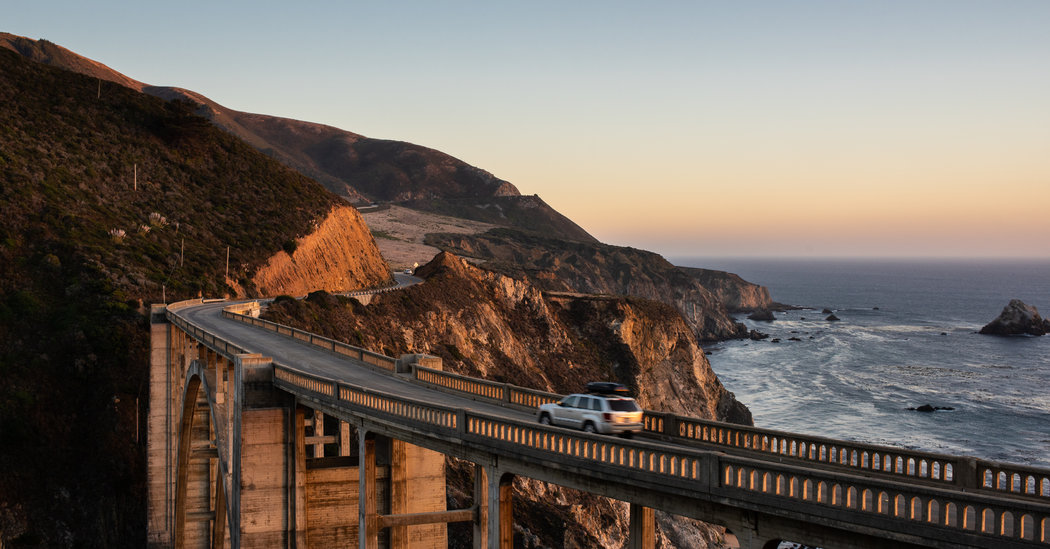
NONE OF THAT WAS PLANNED when I woke up that morning, excited about my actual destination: an anomaly of a resort in San Luis Obispo called the Madonna Inn. On our way through on that family trip, my parents bought a book of postcards depicting the 110 themed rooms, and though we didn’t stay there, I had savored it, hoarded it, studied it so closely that I remembered the features and names of some of the rooms decades later, including a rock-waterfall wall and shower in the Cave Man Room. Which is precisely the one I checked into, and which somehow exceeded my expectations, though I’ve been expecting them since I was 13 years old.
The Madonna Inn is beyond garish, wild with over-decoration and lack of subtlety and colors — the steakhouse oozes with every shade of pink, because Alex Madonna, the second-generation Swiss who opened this hotel in 1958 and was a ranching partner of John Wayne, was not concerned with what you thought about his masculinity. But every detail of the million details throughout the sprawling property is clean and classy and meticulous — and beautiful.
In my room, where the ceiling, floor and walls were made of real rock, there was a set of clubs — cave-person clubs — hanging in wall-mounted holsters at either side of the king bed. When I picked one up and turned it around in my hands, it was heavy: hand-hewn from a solid piece of wood. The window in my bathroom was a stained-glass rendering of a cave man overlooking a valley rich with jewel tones. I’ve been to countless hotels in dozens of countries since I looked at pictures of the Madonna Inn as a teenager. I am unconvinced I wasn’t somehow looking for the Cave Man Room the whole time.
The next morning, I had planned to wake up early. But I slept, in soft sheets and with animal-print blackout curtains drawn, for 12 hours. I had planned to lunch at one of the classic seafood spots along the 1 in Malibu, where it’s called the Pacific Coast Highway. Instead I stopped at another beach on the way and sat and stared in the wind and then had to head more directly to the airport, accounting for Los Angeles traffic.
Plans change. Landscapes change. Perilously, climates change.
BEFORE THIS TRIP, THE LAST TIME I had been on the 1 was three springs ago, revisiting with my then husband, after we had moved away from the Bay. One morning, I found myself alone behind the wheel at a sharp curve in Big Sur with a strong enough urge to drive off it that I realized I needed to change my life. Within a year, I had separated. Within another, I was finalizing plans to move again, to find my way back, to the state.
It wasn’t just how you could die in California, on a famous bridge, that my father had taught me almost exactly 25 years ago. It was also how you could live. “Lot of gays here,” he had said our first morning in San Francisco, over breakfast in the hotel restaurant. I’d wondered, heart racing, if he had brought it up because he had seen two men holding hands on the sidewalk outside the window next to our table; trying not to leap out of my chair to look, I asked how he knew that. Both of my parents sort of shrugged. Everybody knows that.
It turned out to be my place for sanctuary, too. When I moved here in my late 20s, I drank too much, and built a career I barely could have dreamed, and got evicted by tech workers and had the time of my life and had to fight for it, too. Moving back a few months ago, in my late 30s, not just queer but also openly trans, I was new but rooted in a place that is capable of holding so much complexity. That expands the definitions of what’s worthwhile, building and maintaining a road on an ever-shifting stretch at an edge of the world. That is harsh and precarious and utterly nourishing. That understands how a person or a tree or a planet can be simultaneously burned out and voraciously alive; that gender can be a construct, and a spectrum, and a death sentence. That my path here was switchbacked but perfect, and that you don’t have to be born someplace for it to be home.






